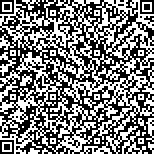| 引用本文: | 杨永敢,康子豪,詹炳根,余其俊,熊焰来.初始损伤混凝土的抗硫酸盐侵蚀性能[J].建筑材料学报,2022,25(12):1255-1261 |
| |
|
| |
|
|
| 本文已被:浏览 245次 下载 863次 |

码上扫一扫! |
|
|
| 初始损伤混凝土的抗硫酸盐侵蚀性能 |
|
杨永敢1,2,3,康子豪1,詹炳根1,2,余其俊1,熊焰来3
|
|
1.合肥工业大学 土木与水利工程学院,安徽 合肥 230009;2.合肥工业大学 土木工程结构与材料安徽省重点实验室,安徽 合肥 230009;3.合肥水泥研究设计院有限公司,安徽 合肥 230051
|
|
| 摘要: |
| 通过外观形貌、抗压强度损失率、硫酸根离子含量的变化,系统研究了干湿循环与硫酸盐耦合作用下初始损伤混凝土的劣化规律,建立了混凝土累积损伤模型;同时,采用X射线衍射仪(XRD)、扫描电镜(SEM)、X射线计算机断层扫描仪(X-CT)揭示了混凝土的劣化机理.结果表明:随着初始损伤度的增大,试件破坏等级明显加剧;当干湿循环270次时,初始损伤程度为0%、10%和20%的混凝土抗压强度损失率分别达到34.6%、48.6%、67.5%,其表观硫酸根离子含量分别为1.87%、2.63%和3.83%;混凝土损伤速率随着干湿循环次数的增加而增大,且初始损伤混凝土的损伤速率增长幅度明显大于完整混凝土;干湿循环与硫酸盐耦合作用下混凝土的劣化表现为物理侵蚀和化学侵蚀,其中物理侵蚀为硫酸钠晶体的结晶析出,化学侵蚀为在孔隙及微裂缝中生成腐蚀产物而产生的膨胀破坏. |
| 关键词: 损伤混凝土 干湿循环 硫酸盐侵蚀 损伤模型 劣化机理 |
| DOI:10.3969/j.issn.1007-9629.2022.12.006 |
| 分类号:TU528.01 |
| 基金项目:国家自然科学基金资助项目(52008146);中央高校基本科研业务费专项资金资助项目(JZ2021HGTB0089, JZ2020HGQA0205, PA2020GDSK0097);高性能土木工程材料国家重点实验室开放基金资助项目(2021CEM003);大学生创新训练项目(X202210359208);中国中铁股份有限公司科技研究开发计划项目(2020-重大-01);3~8 m大直径混凝土管桩基础关键技术研究项目(JKKJ-2019-13) |
|
| Sulfate Resistance of Concrete with Initial Damage |
|
YANG Yonggan1,2,3, KANG Zihao1, ZHAN Binggen1,2, YU Qijun1, XIONG Yanlai3
|
|
1.College of Civil Engineer , Hefei University of Technology, Hefei 230009,China;2.Anhui Key Laboratory of Civil Engineering Structure and Materials, Hefei University of Technology,Hefei 230009,China;3.Hefei Cement Research and Design Institute Co.,Ltd.,Hefei 230051,China
|
| Abstract: |
| Through the changes of appearance, compressive strength loss rate and sulfate ion content, the degradation rule of concrete with initial damage under the couple action of dry-wet cycle and sulfate was systematically investigated. A cumulative damage model of concrete was established. At the same time, the deterioration mechanism of concrete was revealed by X-ray diffractometer (XRD), scanning electron microscope (SEM) and X-ray computed tomography(X-CT). The results show that with the increase of the initial damage degree, the damage grade of the specimen is obviously intensified; when the dry-wet cycle are 270 times, the compressive strength loss rate of concrete with initial damage degree of 0%,10% and 20% reaches 34.6%、48.6%、67.5%, respectively, and the apparent sulfate ion content of concrete is 1.87%, 2.63% and 3.83%, respectively. The damage rate of concrete increases with the increase of the number of dry-wet cycles, and increases of the damage rate of concrete with initial damage is obviously greater than that of the complete concrete. The degradation of concrete under the coupling action of dry-wet cycle and sulfate show physical and chemical corrosions. Physical corrosion is the crystallization of sodium, and chemical erosion is the formation of corrosion products in pores and micro-cracks with the result that damage expands. |
| Key words: damaged concrete dry-wet cycle sulfate attack damage model deterioration mechanism |
|